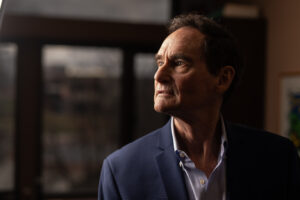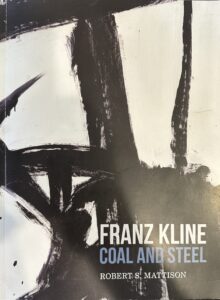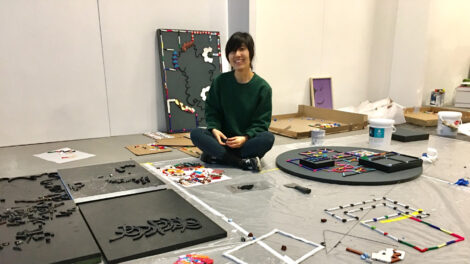Prof. Robert S. Mattison finalizes online catalog of artist Franz Kline
By Bryan Hay
Robert S. Mattison has come full circle with his lifelong interest in Franz Kline, completing a comprehensive and definitive digital catalogue raisonné of the American abstract expressionist’s artwork.
Working with the Estate of Franz Kline and Hauser & Wirth Institute, Mattison, Marshall R. Metzger Professor of Art History, reached out to museums, galleries, auction houses, and private collectors throughout the world to document and present 256 of Kline’s mature oil paintings.
Created between 1950 and 1962, the collection represents a watershed period in the artist’s career. Some of the works Mattison identified had been previously unknown to the larger art world.

Robert S. Mattison, Marshall R. Metzger Professor of Art History
Resulting from Mattison’s December 2022 publication of Franz Kline Paintings,1950-1962, the digital catalog provides free and open access to the art, affording artists, scholars, and Kline admirers endless opportunities to spend time with and study the art.
Mattison, a long-time scholar of mid-20th century art and abstract expressionism as well as Kline’s work, was introduced to the project by one his first students at Lafayette, Jennifer Gross ’85, founding and first executive director of Hauser & Wirth Institute.
His work on the catalog was so extensive, detailed, and important that Lafayette granted Mattison an early sabbatical to begin research on it. Mattison says the monumental effort provides an essential resource for an artist who commands global admiration.
A native of Wilkes-Barre, Pa., Kline (1910-1962) gained international fame in the 1950s for his large-scale black-and-white paintings. Kline’s angular and geometric images reflect coal and steel imagery from his upbringing in northeast Pennsylvania. Mattison explored this previously ignored connection in his 2012 exhibition and catalog Franz Kline: Coal and Steel (Allentown Art Museum and Baruch College, City University, New York).

Franz Kline: Coal and Steel, a catalog by Prof. Robert S. Mattison
“Kline epitomizes an important aspect of the American condition in the mid-century,” Mattison says. “In the post-war era, America emerged as a newly formed global power in the context of the fearful environment generated by the Cold War. The raw energy combined with a certain off-balance fragility in Kline’s compositions embodies some of that sensibility.”
Mattison’s interest in Kline began well before he arrived at Lafayette in 1981. Having already established relationships with major collectors of Kline’s work, he could barely contain his excitement in exploring Kline’s cultural roots when he arrived in eastern Pennsylvania.
“One of the first things I did with my wife, Liza, was to go up on a winter’s day to the area where Kline lived to see the coal breakers and the slag heaps covered in snow, the black-and-white scenes that influenced him,” says Mattison, who has regularly taught Kline in modern art courses and his abstract expressionism seminar.
“He was a child during the height of the anthracite coal boom. His stepfather worked for the railroads, and the youngster absorbed that industrial excitement,” Mattison says. “And then, by the time he was an adult, the anthracite economy had collapsed, and he saw the fragility of that experience. It became his story, his origin story.”
Arriving in New York in 1938, Kline thrived on the urban energy of Greenwich Village, but he was penniless and frequently changed studios because he couldn’t pay the rent. He sold his semi-representational paintings of industrial Pennsylvania and gritty downtown New York in the open-air markets of Washington Square. As he developed his black-and-white drawings and paintings, he was first discovered by such fellow artists as Willem de Kooning. Beginning in 1950, he had a series of groundbreaking New York exhibitions of these new works. In 1961, Kline was chosen as an American representative at the 30th Venice Biennale. On May 13, 1962, at the height of his career, Kline tragically died of a heart attack.
Mattison hopes the free digital online catalog, a new idea in the art field, will open Kline’s work to a wide range of scholars and the public. The digital format also allows for revisions as new discoveries are made, something not easily done with traditional printed catalogs.
“I am proud to have worked on this project,” Mattison adds. “Hopefully, it will not only be a living document for the further study of Kline but will serve as a gateway for others investigating 20th-century American art.”

